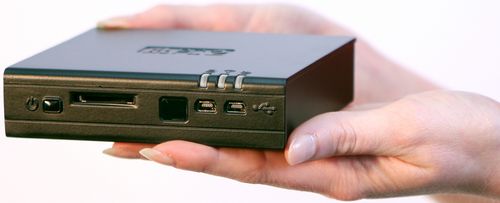« Kinpo Thin Client: 7-inch Android Tablet with touch screen | Main | Thin Desktop® 2.3.2 Available for General Release »
June 06, 2009
Intel Enables Thin-But-Not-Pricey Laptops
Source link on Cloud Computing
Really thin laptops are pricey and little netbooks are dumb. That leaves a space in the middle that Intel - in a money-generating segmentation exercise - means to fill with low-cost, skinny, full-featured hybrids" that are a cross between the two species.
Intel is predicting that the hybrid widgets will account for 20% of the consumer PC market by Q4.

The move has been interpreted as a defensive measure against the all-too-popular Atom - though Intel denies it. And then the Atom-less AMD is trying to peddle "value ultra-thin" notebooks and ARM has ambitions for its really cheap 3G-capable "smartbooks."
The Intel-conceived hybrids, running maybe $500-$1,300 and weighing two-five pounds, will be powered by a 1.3GHz CULV chip, a so-called consumer ultra-low voltage 45nm old-school Pentium processor - formerly called the SU2700 - that would stop Atom from eating into mainstream notebook sales and the others from making too many advances.
Like Atom-based netbooks, Intel expects the devices to be a runaway success. There could be 50 hybrid models out this year from all of the usual suspects.
They would have bigger screens than the netbooks' seven- to 10-inches, full-size keyboards, the power to do more complex things and the graphics to see it.
Battery life would be comparable to a standard laptop and they'd be no more than an inch high.
Like other Pentiums, the CULV has an 800MHz front-side bus, 2GB of L2 cache and burns 10W or less at peak.
Meanwhile, to confuse the issue, Intel has been showing off its next-generation Pine Trail Atom chip, a two-chip platform as opposed to the current three-chip because graphics have been moved onto the processor. That means a still smaller footprint.
Intel says it will also have improved performance, lower thermals, better graphics and longer battery life.
There are now more than 75 Atom designs on the market.
Intel got some sort of digital divide-addressing scheme going on in India called Project Blue that combines Atom-based nettops with WIMAX connectivity.
Posted by Staff at June 6, 2009 03:17 PM